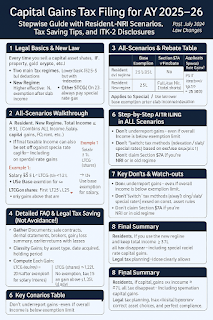Novoloop’s Plastic Upcycling Breakthrough: Where Indian Legacy Meets Circular Leadership
When you learn to see waste as potential, you don't just build products—you build new futures.
India's Plastic Waste: A Hidden Resource Waiting to Be Claimed
India generates over 3.5 million tonnes of plastic waste annually, much of it low-grade polyethylene—like grocery bags, wrappers, and multilayer film. Most of it ends up in landfills or waterways, while industries continue importing virgin polymers at rising costs and emissions.
But in 2025, this imbalance is becoming a massive opportunity. With stricter ESG mandates, tax incentives, and the rise of plastic neutrality requirements, companies now have both the reason and reward to close the loop.
Enter Novoloop, a pioneering startup with a proven process to turn hard-to-recycle plastic waste into virgin-quality materials—and a pilot plant already running in India.
Novoloop: Making the Impossible, Profitable
Novoloop’s patented ATOD™ process (Accelerated Thermal Oxidative Decomposition) converts polyethylene waste into Oistre™, a high-performance thermoplastic polyurethane (TPU) that replaces petroleum-based materials used in footwear, auto parts, electronics, and packaging.
Their pilot plant in Surat, built in partnership with Aether Industries, is already operational, processing 70 tonnes of plastic per year. Every batch has been commercially sold out, confirming both technical viability and market appetite.
Key features:
-
Virgin-grade polymer output with up to 91% lower carbon footprint
-
Traceable supply chain aligned with India’s BRSR and EPR mandates
-
Applicable across multiple industries without design or performance compromise
-
Backed by $21 million in Series B funding (June 2025) for full commercial expansion
-
Named among TIME Magazine’s Top 100 Greentech Companies of the year
Waste into Wealth: Global Products That Followed the Same Path
Novoloop’s model may feel radical, but history is filled with breakthrough businesses that began by rethinking what others ignored. These success stories reveal a pattern — when waste meets innovation, entire industries evolve.
1. Gore-Tex (Expanded PTFE)
Once an offshoot of Teflon, expanded PTFE became the world-renowned Gore-Tex — a waterproof, breathable fabric used in everything from rain jackets to medical implants. What was seen as technical waste is now a billion-dollar niche.
2. Nutella (Hazelnut Spread)
Born out of wartime cocoa shortages, Ferrero added hazelnuts to stretch limited chocolate supply. That blend became Nutella — now a global food empire born from creative scarcity.
3. OSB (Oriented Strand Board)
Wood industry byproducts like chips and sawdust were engineered into OSB, now a go-to construction panel globally, often replacing plywood at lower cost and higher efficiency.
4. Adidas x Parley (Ocean Plastic Sneakers)
Adidas turned marine plastic waste into high-performance footwear in partnership with Parley. Over 50 million pairs sold worldwide redefined the value of ocean-bound trash.
5. Recycled PET into Textile Yarn
Plastic bottles once destined for landfills are now reborn as yarns for jackets, uniforms, and shoes. Major brands like Patagonia and Uniqlo built entire eco-collections on this concept—now mainstream in India too.
Novoloop is poised to be the next in this legacy — combining industrial performance with environmental renewal.
Why Indian Family Businesses Should Act Now
Indian business families already have the most essential ingredients: industrial scale, generational resilience, and deep stakeholder trust. The next step is aligning with the future — not abandoning roots but extending them.
Novoloop’s model offers:
-
A parallel branch for younger successors to lead circular innovation
-
Opportunity to diversify packaging, materials, and export compliance
-
Scope 3 carbon reductions for large groups under net-zero mandates
-
Creation of green jobs and ESG narrative strength
You can set up circular manufacturing arms under existing entities, partner with upcyclers, or incubate green tech startups from within the family business ecosystem.
Policy Climate in India (2025)
The time is uniquely right:
-
Plastic Waste Management Rules revised with tighter EPR enforcement
-
Union Budget 2025 introduced tax rebates and lower GST for green manufacturing
-
New PLI schemes now include circular economy technologies
-
India debuts in UN SDG Top 100 (Rank 99), with green industry as a key contributor
-
Circularity now aligned with GDP growth, global trade, and national pride
A Dharma-Aligned Industrial Future
This is more than compliance or innovation. It’s seva through science.
It’s protecting the Earth while creating livelihoods.
It’s turning legacy into leadership through the lens of sustainability.
As family businesses once pioneered India’s industrial rise, they can now lead its regenerative rise.
Circular models like Novoloop allow you to preserve tradition while enabling transition—letting the next generation earn its place not by inheritance, but through transformation.
Summary at a Glance
| Factor | Novoloop Model |
|---|---|
| Input | Low-value polyethylene (bags, wrappers, MLP) |
| Output | Virgin-grade TPU (Oistre™) |
| CO₂ Reduction Potential | Up to 91% vs. fossil-based TPU |
| India Pilot | Surat, with Aether Industries |
| Business Demand | Fully sold out pilot; commercial scale-up in 2025–26 |
| Industry Use Cases | Footwear, auto parts, electronics, packaging |
| Ideal Indian Partners | Family businesses in manufacturing, logistics, packaging, textiles |
Final Thought
Waste only becomes a liability when you stop asking what it can become.
For Indian family businesses, Novoloop offers not just a product, but a platform — to empower the next generation, align with Dharma, and prove once again that legacy is strongest when it evolves.




